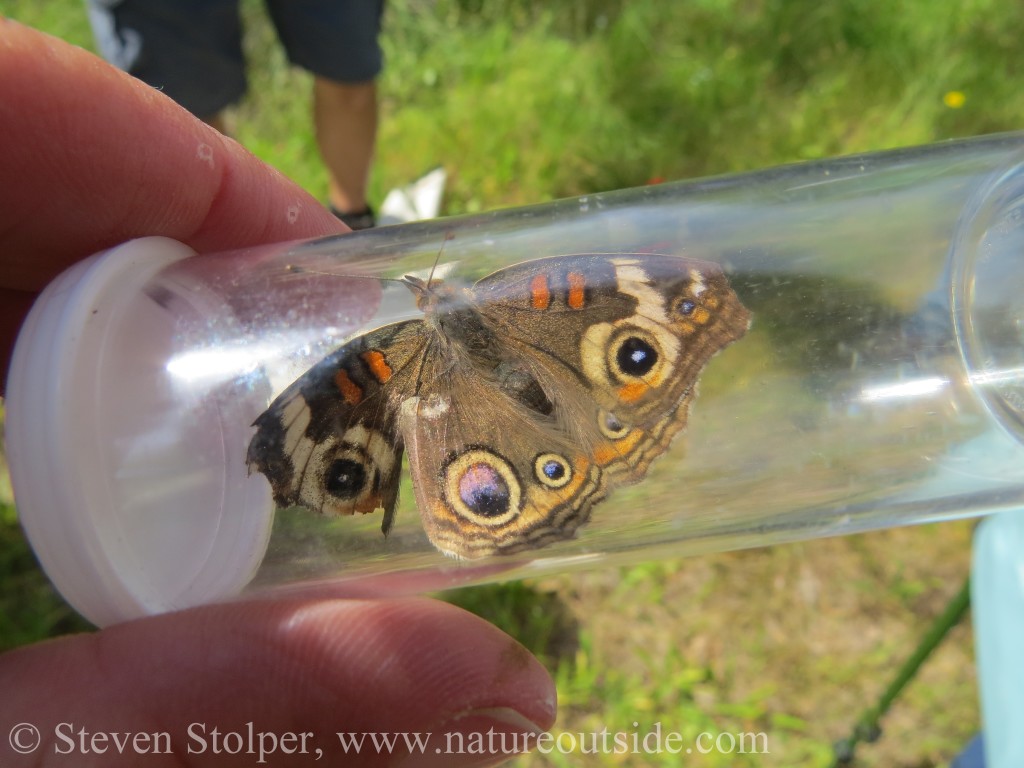
Safari (n) – an expedition to observe or hunt animals in their natural habitat.
It’s been many years since I have traveled through Africa. But I still remember the thrill of encountering animals that were strange to me. I “know” the appearance of the American Robin. I know much of its habits, its call in the morning and how it feeds. I know where it likes to nest and the blue color of its eggs. But what do I know of an elephant? As a traveler in a strange land this new animal was a thrilling mystery.
I just experienced the same excitement of discovery only a few steps from my own door. I took part in an entomology outing. Entomology is the branch of science concerned with the study of insects. The goal of our hike was to observe the amazing variety of insects that surround us every time we step outside.
One’s destination is never a place, but a new way of looking at things.
– Henry Miller
Expedition Leader
All expeditions need a leader. Ours was Peter Oboyski, Collections Manager & Senior Museum Scientist at the The Essig Museum of Entomology at UC Berkeley.
Peter delivered a fascinating lecture the night before the outing. Then away we went, early the next morning. No traveling is required for an insect safari. We just stepped outside the lecture hall, on the west coast of the Santa Cruz Mountains.
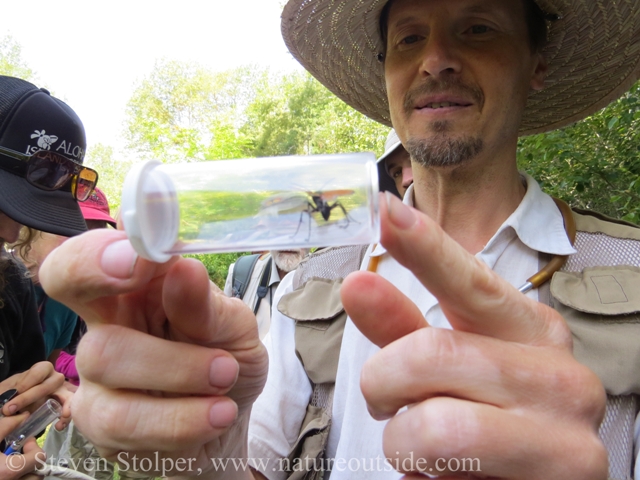
Our expedition leader
Insects, spiders, or reptiles seem to provoke a fear response in some people. Peter says, “Most insects do not bite or sting, and you know the ones that do.” Ironically, I don’t know the ones that do! I grew up in an urban environment on the East Coast. After arriving in California, I learned that there were several dangerous insects of which I was completely unaware. For example, I had never seen a velvet ant, a female wingless wasp in the Mutillidae family. So I tend to treat insects with a great deal of respect until I learn their species, especially if they are brightly colored.
This post contains affiliate links.
On Safari
It is amazing how much life is in every square meter of our world. It is simply a matter of looking for it. To observe insects, we have to start thinking at a smaller scale. Walk down the trail, turning our heads, and we see nothing. Turn over rocks, look under logs, beat the branches, overturn the fallen leaves, and a new world appears as if conjured from thin air.
Peter had us shaking branches, beating bushes, and sweeping nets through grass. We used two kinds of nets. The tougher “sweep nets” could be banged into branches and skimmed across foliage indiscriminately. We had to be more careful with the gauze-like butterfly nets.
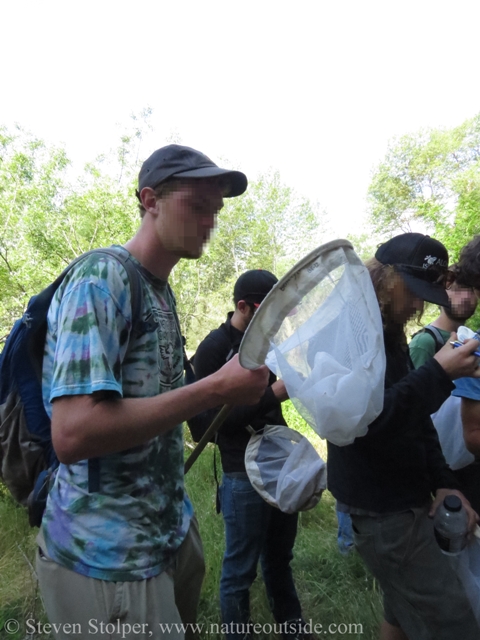
We used butterfly nets (shown) and sweep nets
Once we entrap the insects, we “flip” the head of our net at least 90 degrees to seal the opening with the net material. This prevents the insects from escaping “up” from the bottom of our nets. If we netted an interesting insect, we transferred it to a glass vial for inspection. Peter was a pro at this after many years of practice.
Another tool we employed was a beating sheet (or pillowcase). We held or placed the sheet underneath a branch. Then we whacked the branch with sharp blows. The severe blows are necessary to dislodge the insects. Too gentle, and they hold on as if riding a branch swaying in the wind.
Here is a sample of our catches:
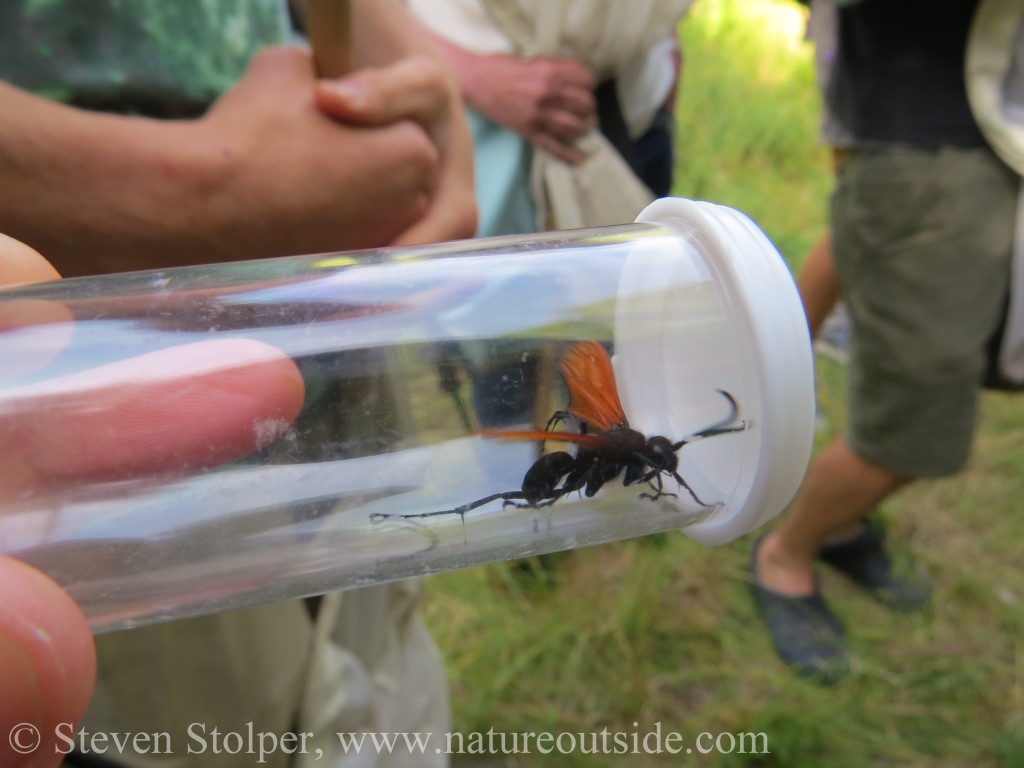
Spider wasp
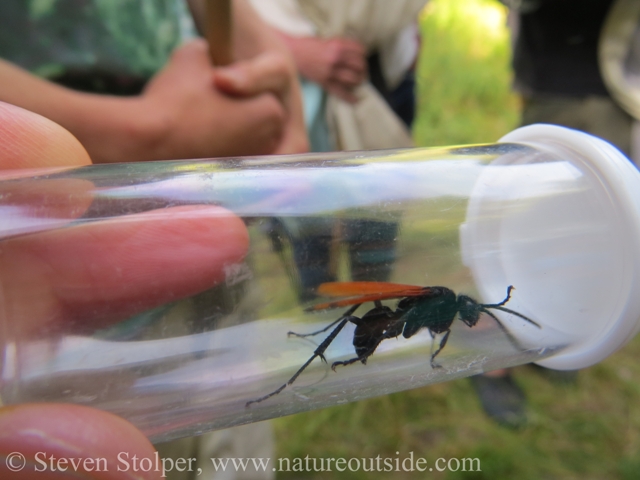
Orange wings are aposematic. They warn potential predators that the wasp is dangerous.

Common buckeye (Junonia coenia) is uncommonly beautiful
Overnight traps
The course of our hunt brought us to an area where Peter had set overnight traps. Each trap consists of a white 4 gallon plastic pail. The top of the pail is covered by a metal funnel. Above the funnel is a set of four acrylic veins in the shape of a “plus sign”. The veins surround a bright light in their center. Batteries power the light overnight.
Insects attracted by the light bump into the acrylic veins. Stunned, they fall into the funnel and end up in the pail. The funnel shape keeps the insects from escaping. The insects try to crawl up the walls. A special form of cyanide in the bucket dispatches the insects for later study. But other chemicals can be used for this purpose.
The contents of the traps varied with location and habitat. One of our most interesting finds was a tiger moth. The second picture shows the metal funnel of the trap.
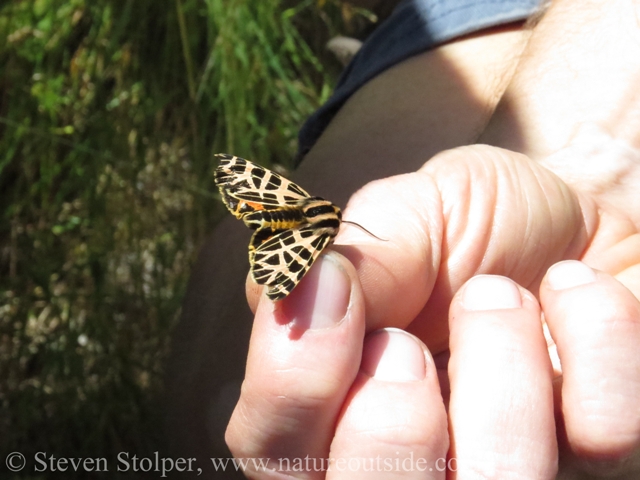
Tiger Moth (Arctiidae sp)
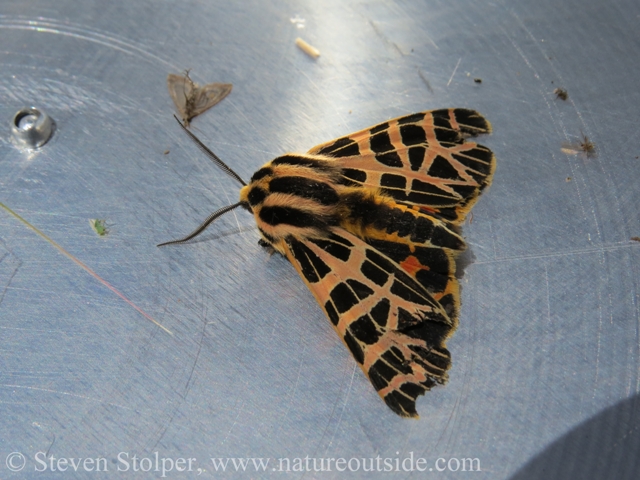
Amazing tiger moth on top of metal funnel. I like the antenna
Here is a cicada that did not want to be released. It clung stubbornly to the sweater of a would-be bug hunter.
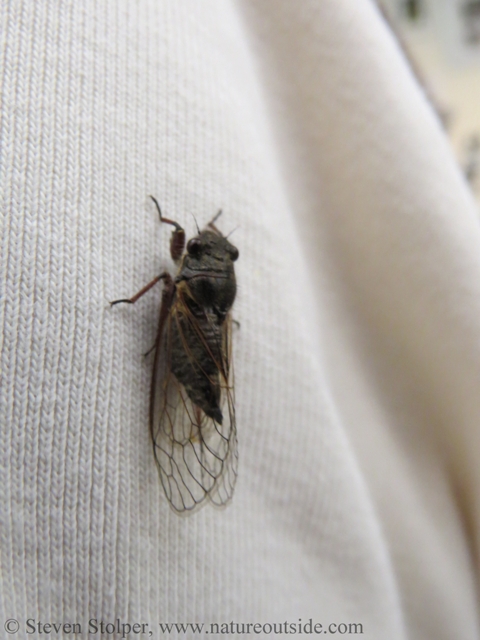
Cicada won’t go home
Tools of the Trade
You do not need special equipment to study insects. But here is a list of equipment that can help. Remember, you do not need any of these to enjoy watching insects in a natural setting.
- Forceps
- Glass vials with lids
- Aspirator (Pooter) – sucks insects into vials. I will talk about this later…
- Alcohol (for preservation)
- Wax butterfly envelopes/tins – Preserve delicate butterflies for later study
- Nets – sweep net, butterfly net
Using an Aspirator
On the hike back to the lecture hall, Peter asked us to collect insects from a large Manzanita bush (Arctostaphylos). When we returned to the classroom, he demonstrated how to use an aspirator.
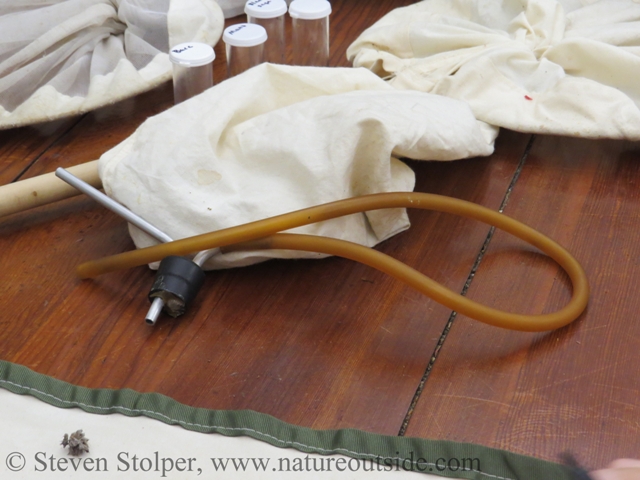
Aspirator (pooter)
An aspirator transfers insects from a net or surface into a glass vial without the use of hands. It is easier than catching each and every insect by hand. It also minimizes the risk of damaging the insect. If the insect is dangerous, it also protects the collector.
The aspirator is nicknamed a “pooter”. The name arises from the “poot!” sound it makes when used. It consists of a rubber stopper with two metal tubes running through it. One metal tube bends forward, looking like the barrel of a pistol. The second tube is shorter and vertical. A long rubber hose is attached to the vertical tube. For use, the stopper is placed into the glass vial that will be used to collect the insect.
It operates by vacuum, sucking the insect through the barrel and into the glass vial. But to create the vacuum, the collector must suck on the rubber hose connected to the vertical tube. Suction pulls the insect into the barrel and deposits it into the vial with a loud “poot!” A metal mesh filter prevents the insect from being sucked into the vertical tube, through the hose, and into the mouth of the collector. But accidents do happen! 😯
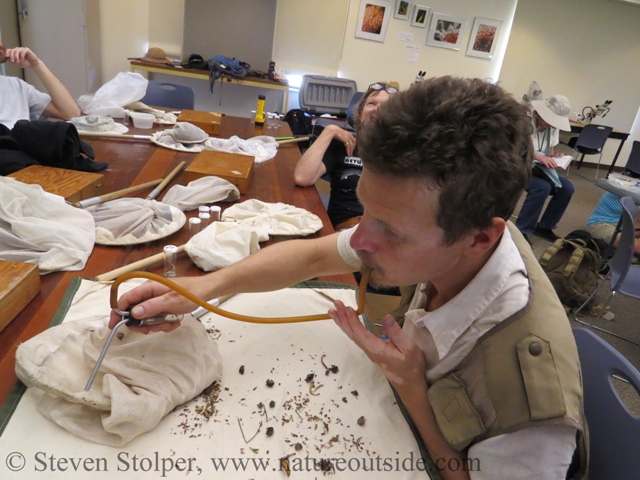
Peter using aspirator to collect our “catch”. He will use the insects as part of an annual survey
Conclusion
It has been a long time since I experienced the excitement I felt during our insect safari. It opened a new world of strange, unfamiliar animals that employed unique strategies for survival. I now know that any time I want, in almost any place, a safari awaits!
Share your insect adventures in the comment section below!
Peter Recommends These Resources
Borror and DeLong’s Introduction to the Study of Insects, by Norman F. Johnson, Charles A. Triplehorn, May 19, 2004
Related Articles on NatureOutside
Moths – Amazing Creatures of the Night!
Touch This Frog and You’ll Croak!
Wildflowers of the Serpentine Realm
If you enjoyed this article, you might want to read more in the nature section. You can also read about other trips here.

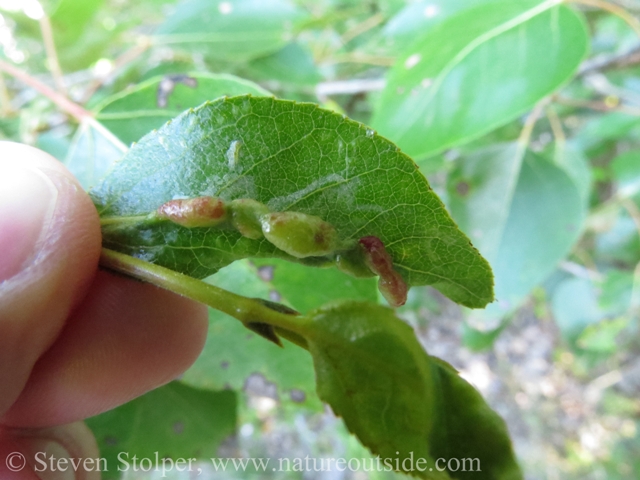


Leave a Comment